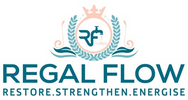
Where Should a Water Softener Drain To?
Installing a Water Softener is a brilliant move if you’re tired of limescale build-up, itchy skin, or struggling appliances. But while most people focus on the shiny new unit, there's a crucial Installation and Setup detail many overlook—where does the water softener actually drain to? Getting this wrong can lead to flooding, backflow, or even fines. Whether you're installing a system for the first time or just tweaking your setup, understanding proper drainage is essential.
Let’s dive into how to drain your softener safely and effectively.
Proper Drainage for Your Water Softener
Why Proper Drainage is Crucial
Every few days, your softener goes into regeneration mode. That’s when it flushes out the minerals it’s collected—calcium, magnesium, the usual suspects. This wastewater has to go somewhere, and it can’t just go anywhere. If you dump it down the wrong pipe, you could cause backflow into your drinking water. Worse still, an overloaded drain could flood your floor, damage property, or burn out the unit itself. A properly drained softener is a happy softener—and a dry utility room is a happy home.
Acceptable Drainage Locations
There are several safe and sensible spots you can use to drain your water softener. Here’s what to consider.
Utility Sink or Laundry Tub
One of the easiest and most common options is your utility sink. These are usually located near washing machines or boilers, which makes setup easy. The best part? You can watch the discharge in real time. That means if something looks off—too slow, too murky—you’ll catch it before it causes damage. Just be sure to use an air gap so the dirty water doesn’t sneak back into your clean pipes.
Floor Drain
Got a floor drain in your basement or plant room? Perfect. These drains let gravity do the work and are often designed to handle large volumes of water. But give it a once-over before use. If it’s clogged, or not sloped correctly, the water might back up instead of draining away.
Standpipe Drain
This one’s common in laundry setups. A standpipe is a vertical pipe that leads directly to a waste line. It’s ideal for water softeners too—just be sure it’s tall enough to prevent splashing, and once again, don’t skip the air gap. That little gap of air can save you from a world of plumbing problems.
Unacceptable Drainage Locations
You’d be surprised how many people think it’s fine to run a hose to the nearest open pipe or garden.
Here’s what not to do:
-
Don’t connect directly to waste stacks. You risk contaminating your drinking water.
-
Don’t drain outside without permission. In the UK, that salty wastewater can breach environmental laws.
-
Don’t run it into a toilet, sink, or gutter without an air gap. Backflow is not just gross—it’s dangerous.
If you’re in doubt, call your local water authority. Better safe than soaking wet.
Important Drainage Guidelines
Air Gap Requirement
Let’s talk about air gaps—because they’re not just helpful, they’re required by law. An air gap is a small break between your softener’s drain hose and the actual drain. Think of it like a safety buffer. If the main drain backs up, that gap stops dirty water from siphoning back into your system. You can create one with a funnel, a standpipe adapter, or a dedicated air gap fitting. Just make sure the hose sits at least 1.5 inches above the drain point.
Avoiding Backflow
Backflow is a plumbing nightmare—and it’s completely avoidable. Along with installing an air gap, keep these tips in mind:
-
Make sure the hose isn’t submerged.
-
Keep the hose clear of any standing water.
-
Use brackets or clamps to hold it in place and avoid sagging.
A sagging hose can act like a siphon and pull dirty water back into the unit.
How to Install a Water Softener Drain Line
Doing it yourself? Here’s a quick and easy walkthrough:
-
Choose a legal and safe drain point (like a sink, floor drain, or standpipe).
-
Attach the hose using the fitting supplied with your softener.
-
Position the hose to slope downwards—gravity helps here.
-
Install your air gap (minimum 1.5 inches above the drain).
-
Clip or tie the hose in place so it can’t slip or wiggle.
-
Run a regeneration cycle to test it. Watch the flow, and check for leaks.
Still unsure? Don’t wing it—ring a plumber.
Water Softener Drain Overhead
What if the only drainage point is above the softener? In this case, you’ll need a drain pump. These are designed to push the salty water upwards into the main drain. Make sure the pump can handle brine discharge—regular pumps often aren’t compatible. You’ll also need a check valve to stop water flowing back into the softener when the pump stops. It’s a bit more complex, but with the right kit, it works just fine.
Conclusion: Ensuring Safe and Effective Drainage
Getting the drainage right isn’t just a box-ticking exercise—it’s what keeps your water softener running smoothly, safely, and for years to come. Stick to approved drainage spots. Avoid shortcuts. And always include an air gap. Whether it’s a utility sink, floor drain, or standpipe, the key is safe, clean disposal of the waste water. If you’ve got a more complex setup—like an overhead drain—there’s always a workaround, just make sure it’s done properly. Protect your home. Follow the rules. And enjoy the soft, scale-free water that comes with a water softener that’s set up the right way.
🚿 Say goodbye to limescale for good — shop trusted Water Softeners designed for UK homes..
🛒 Not sure where to start? Drop us a line of 0121 630 1130, info@regalflow.co.uk, or click the green WhatsApp icon and ask away.
More Water Softener Articles You’ll Want to Read
Can You Fit a Water Softener Yourself?
Can a Plumber Fit a Water Softener?
Where to Install a Water Softener


Leave a comment